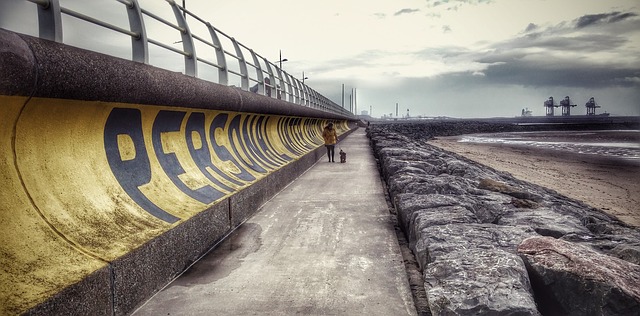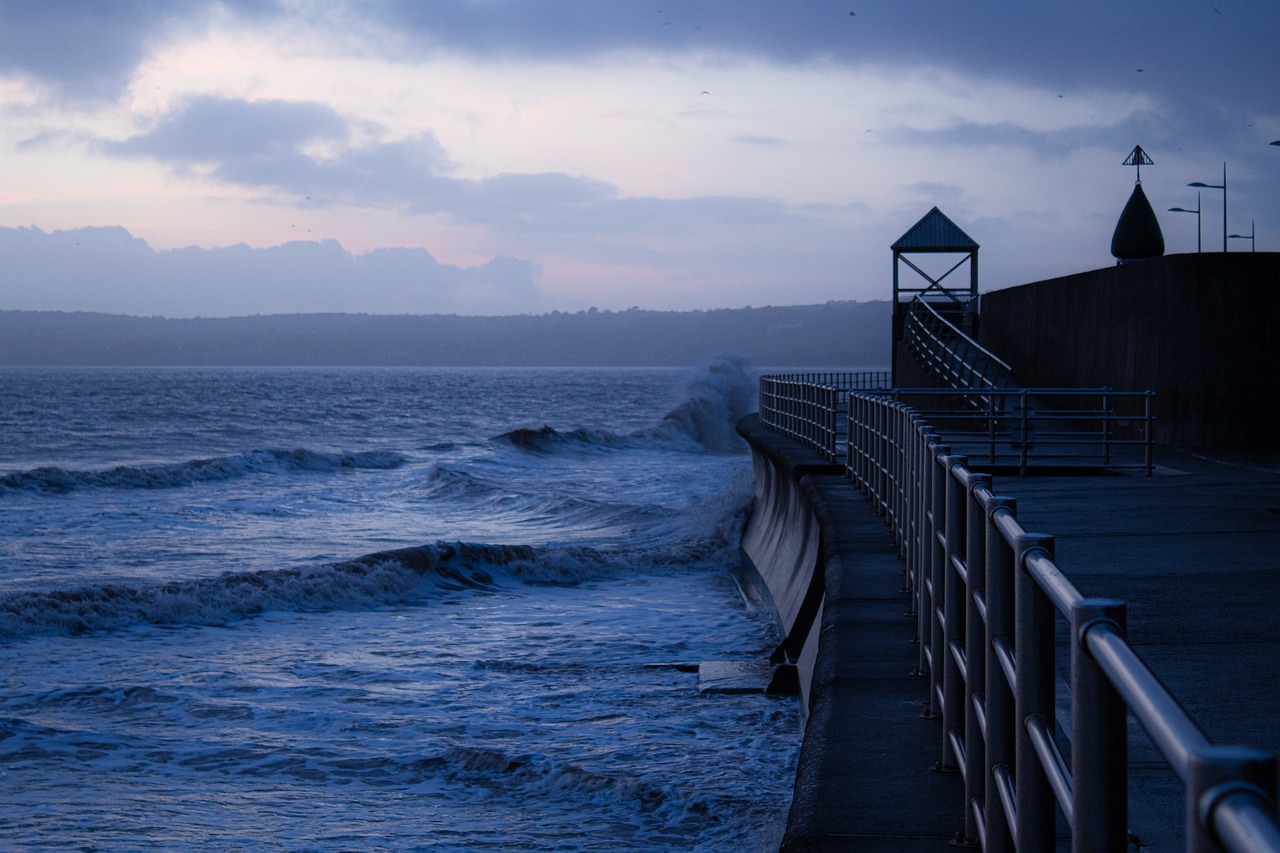Coastal defences
Contents |
[edit] Introduction
Despite occupying less than 15% of the Earth’s land surface, coastal zones accommodate more than 40% of the world’s population. Historically, this is due to the increased commercial and industrial potential of areas that are near the coast, such as shipping, fishing and tourism industries.
Coastal defences are a key part of coastal management, in which the land-sea boundary is protected from flooding and erosion, categorised as hard engineering and soft engineering.
[edit] The history of coastal defences
Early inhabitants of the UK used basic methods such as earth embankments and natural features such as cliffs as initial forms of coastal defence. Coastal settlements were often strategically located on higher ground to mitigate the risk of flooding.
In the Medieval and Tudor Periods (5th-16th centuries) coastal towns and ports began building rudimentary sea walls and embankments to protect against tidal flooding. As trade and commerce grew, the need for better defences became important.
In the 16th and 17th centuries more structured coastal defence projects emerged. Embankments and sea walls were built using materials such as timber and stone. Prominent examples include the Thames Embankment in London and various defences along the east coast.
In the 18th century the construction of sea walls, groynes, and breakwaters became more systematic due to increased coastal trade and the expansion of naval activities.
The Industrial Revolution brought about technological advancements that influenced coastal defence construction. Concrete and iron began to replace traditional materials. Many harbours, docks, and piers were constructed during this era, including Plymouth Breakwater and the harbour defences in Portsmouth.
The two World Wars prompted the construction of significant coastal defences to protect against potential naval invasions. Coastal fortifications, pillboxes, and anti-submarine measures were established. After World War II, attention turned toward maintaining and upgrading existing defences.
With rising awareness of climate change and its effects, coastal defences in the UK have increasingly focused on adapting to changing sea levels, storm surges, and coastal erosion. Managed retreat (allowing the coastline to change naturally) and more sustainable defence methods are being explored, such as using salt marshes and restoring natural coastal features.
Coastal defence projects often involve a combination of engineering solutions, natural defences, and monitoring systems. The UK faces ongoing challenges from the effects of climate change, including rising sea levels and increased frequency of severe storms. As a result, the country continues to invest in coastal management and adaptation strategies.
[edit] Types of coastal defences
[edit] Soft engineering
Soft engineering can be a more sustainable, long-term and potentially more cost-effective approach to coastal defence, working with natural processes to protect the shoreline.
Techniques include:
- Beach replenishment: This involves the importing of beach-grade sediments to ‘top up’ beaches.
- Sand dune management: This can include constructing footpaths, ladders and boardwalks to prevent degradation by humans.
- Beach drainage: Lowering the water table locally beneath the beach face, causing sand accretion above the drainage system.
[edit] Hard engineering
Hard engineering can be more expensive, and is sometimes less durable and more intrusive than soft engineering. Hard engineering can also cause issues elsewhere, simply moving the problem along the coast.
Some common examples of hard engineering solutions are set out below:
[edit] Groynes
Groynes are walls of concrete, stone or timber that extend out from beaches, acting as barriers. They protect or retain beach material and slow losses through long-shore drift. Steel sheet piling may also be used, but it must be suitably capped and backed with concrete. It is important that the piling penetrates to a depth that will prevent wave action from underscoring the structure.
Despite having a positive local effect, groynes can cause ‘sediment starvation’ which shifts the erosion further down the coastline.
For more information see: Groynes.
[edit] Sea walls
Sea walls are structures that are usually incorporated into a promenade, and are built to limit erosion caused by wave attack. They can be made from materials such as; timber, steel, masonry blocks, precast concrete units and in situ concrete. They are commonly 3-5 m (10-16 ft) high and curved to reflect back the energy of the waves and prevent wave overtopping.
See also: Seawall.
[edit] Revetments
Revetments are onshore sloped structures used as an alternative to sea walls to reduce the landward migration of beaches. They limit the energy of the waves as they break and so reduce their erosive power. They can be constructed using stepped concrete, stone or asphalt and should be designed to have a sufficiently high crest to avoid wave overtopping. In their most basic form, they can be constructed using timber with a rock infill.
NB Culvert, screen and outfall manual, (CIRIA C786) published by CIRIA in 2019, defines revetment as: ‘Works to protect the bed or banks of a channel against erosion, typically constructed from stone or concrete blocks.’
[edit] Breakwaters
Also known as ‘moles’, breakwaters are constructed in outer harbour areas to dampen heavy waves and allow vessels to enter and exit with less swell. They can be sloped or vertical and are typically constructed from concrete blocks, rock fill or a combination of both depending on site-specific conditions such as water depth, range of tides, and foundation conditions.
If they are constructed using blockwork, the marine bed may need to be dredged and a concrete bed laid for the foundation. The blocks can then be lowered by cranes operated from pontoons or barges, perhaps with divers to help position the blocks.
Rubble or rock-fill breakwaters generally use heavy stones ranging from 1-5 tonnes. These can be transported and placed by bottom-opening or side-tipping barges.
For more information see: Breakwater.
[edit] Gabions
Gabions are steel mesh cages filled with rocks, concrete and sometimes aggregate, used to stabilise vulnerable areas by absorbing wave energy. They can project out at right angles from the coastline like groynes, or can be constructed as retained walls, battered or stepped back rather than being stacked vertically. The strength of the wire used to tie the cages together is the critical factor. Galvanised steel wire is commonly used, but stainless steel and PVC-coated wire can also be used.
They are defined by Culvert, screen and outfall manual, (CIRIA C786) published by CIRIA in 2019 as a: 'Wire or plastic mesh container filled with stones to protect against scour or (to) form a retaining wall. Available as cuboids, mattresses or tubes.'
[edit] Related articles on Designing Buildings
- Berm.
- Caisson.
- Coastal change management area.
- Delta Works sea defences.
- Difference between cofferdams and caissons.
- Dredging.
- Dyke.
- Engineers and hurricanes.
- Flood.
- Flood and water management act.
- Flood defences.
- Flood risk.
- Floodwater.
- Groynes.
- Land-sea interface.
- Levee.
- Pile wall.
- Planning for floods.
- Scour.
- Seawall.
- Shoreline management plans SMPs.
- Storm surge.
- Temporary flood defences.
- Three pieces of infrastructure that have saved lives.
- Underwater foundations.
- Water engineering.
[edit] External resources
- ‘Introduction to Civil Engineering Construction’ (3rd ed.), HOLMES, R., The College of Estate Management (1995)
- SE-Coastal Group - Coastal Defences
Featured articles and news
Infrastructure that connect the physical and digital domains.
Harnessing robotics and AI in challenging environments
The key to nuclear decommissioning and fusion engineering.
BSRIA announces Lisa Ashworth as new CEO
Tasked with furthering BSRIA’s impressive growth ambitions.
Public buildings get half a million energy efficiency boost
£557 million to switch to cleaner heating and save on energy.
CIOB launches pre-election manifesto
Outlining potential future policies for the next government.
Grenfell Tower Inquiry announcement
Phase 2 hearings come to a close and the final report due in September.
Progress from Parts L, F and O: A whitepaper, one year on.
A replicated study to understand the opinion of practitioners.
ECA announces new president 2024
Electrical engineer and business leader Stuart Smith.
A distinct type of countryside that should be celebrated.
Should Part O be extended to existing buildings?
EAC brands heatwave adaptation a missed opportunity.
Definition of Statutory in workplace and facilities management
Established by IWFM, BESA, CIBSE and BSRIA.
Tackling the transition from traditional heating systems
59% lack the necessary information and confidence to switch.
The general election and the construction industry
As PM, Rishi Sunak announces July 4 date for an election.
Eco apprenticeships continue help grow green workforce
A year after being recognised at the King's coronation.
Permitted development rights for agricultural buildings
The changes coming into effect as of May 21, 2024.

























